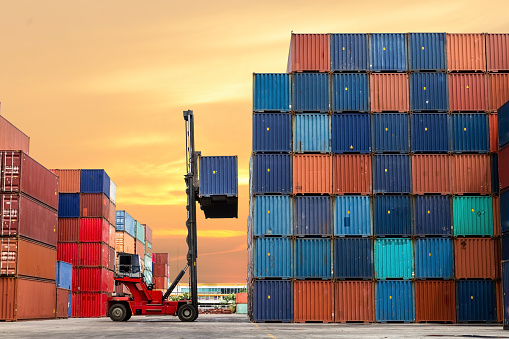
Table of Contents
Most manufacturers, retailers, and warehouse owners are experiencing skyrocketing costs in the management of logistics today.
To capture a larger market, a business owner needs to juggle between many tasks, and delivering goods to keep customers happy is just one of them. What do we need to know about logistics? How 3PL solutions can help bring down warehousing and distribution costs?
Put simply, logistics is the flow of goods. It deals with supply chain management. And, it plays an instrument in satisfying customers and moving goods from suppliers to consumers.
Logistics are vital for businesses looking to improve customer experience and achieve scalability and flexibility in their distribution functions. Working with a third-party logistics provider, also known as a 3PL, retailers, and online businesses are able to reap many benefits such as cost reduction, risk mitigation, efficient processes, and a better customer experience.
That being said, if you are still unsure about the role of 3PL providers and logistics services in modern business, you don’t have to worry! All these concepts are discussed in detail next.
What is Logistics?
As brushed upon earlier, logistics is the process of planning and executing the various activities involved in the transportation, distribution, and storage of goods and materials across the supply chain network. Its primary goal is to meet customer needs and requirements through the deployment of cost-effective and time-efficient strategies.
What is Third Party Logistics?
3PL solutions exist to reduce operating costs and improve the overall distribution, transportation, and warehousing functions. They refer to the outsourcing of the logistics activities to professionals who understand and employ better tools and techniques than one can hope to deploy in-house. The various logistics tasks range from helping to complete a specified task, such as cargo transport or trucking, to managing procurement, inventory management, order fulfillment, and deliveries.
Key Tasks Involved in Logistics Management
The following sections discuss the many activities that go into logistics management today.
Procurement
Considered to be the first step in any logistics solution, obtaining materials would entail negotiation, supply sourcing, inbound transportation, inspection, and order placement.
Order Processing
In the world of logistics, customers’ orders would always be a top priority. In consequence, order processing is undertaken to satisfy customer demands. It usually includes customer service, such as order handling, filing, recording, and receiving.
Material Handling
Material handling involves transporting and storing raw materials, semi-finished products, or finished goods. Logistics management teams handle these activities to minimize losses from spoilage, damage, or breakage.
The Process
Companies looking into logistics solutions would often utilize 3PL services from professional third-party logistics providers. These make it easier to ensure the quality of production and distribution.
The services consist of two main integrated branches, namely, the physical distribution and the material management. The material management department deals with everything that produces components and assembles finished products. It can also include packaging and eventual recycling or reuse.
On the other hand, physical distribution is a term used for transporting finished goods and items to their final destination for consumption. In particular, this branch would deal with warehousing and transportation.
However, it’s worth noting here that the line between these two branches can sometimes be blurred with more complex supply chain activities. For example, these distribution systems can extend right from the supplier all the way to the consumer. The responsibility for transportation and warehousing can even be shared amongst wholesalers, retailers, and manufacturers alike.
As a result, 3PL solutions recognize that these business processes are interdependent and require closer coordination. Therefore, it is important to manage these activities as mutually-dependent parts of a larger system – instead of as functional individual parts.
Why is it Important?
On-time deliveries have always been a vital part of supply chain networking. They make sure everything works in collaboration and that customers are always satisfied.
Besides that, they’ve become even more critical in recent years due to the emergence of Omni-channels and commercial trading on a global level. These businesses use 3PL solutions to meet the demand of same-day home or retail deliveries for customized products ordered from the convenience of your smartphones.
Whether you’re a manufacturer, supplier, or retailer, everyone is dependent on efficient logistics processes for faster and more convenient delivery of various goods.
The Bottom Line
At the end of it all, logistics deal with the subtleties of shipping, warehousing, and order fulfillment. Whether it is production, transportation, or reuse, you can find 3PL solutions for every facet of supply chain management. They are all integral components that work together to meet the needs of contemporary businesses and their increasingly savvy customers.
If you feel like your company needs logistics support and sophisticated distribution services to meet the day-to-day supply and distribution needs, why not give 3PL service providers a chance?
















